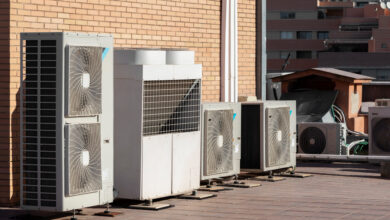Maximizing Energy Savings: Tips for Efficient Heating and Cooling

As the seasons change, so does our reliance on heating and cooling systems to maintain a comfortable home. However, the energy consumption associated with these systems can lead to higher utility bills and environmental impact. In this guide, we’ll explore five practical tips to help you maximize energy savings while keeping your home cozy and relaxed.
1. Optimize Your Thermostat Settings:
One of the simplest ways to enhance energy efficiency is by adjusting your thermostat settings strategically. During colder months, set the thermostat to a lower temperature when you’re away or asleep, and consider investing in a programmable or smart thermostat. Smart thermostat services, like the ones offered by various providers, allow you to remotely control your home’s temperature, ensuring you only use energy when needed. By making these adjustments, you can significantly reduce your heating and cooling costs without sacrificing comfort.
2. Seal Air Leaks and Insulate:
A well-insulated home is vital to maintaining a consistent indoor temperature. Check for drafts and seal any air leaks around windows, doors, and other openings. Enhance insulation in your attic and walls to prevent heat from escaping during the winter and entering during the summer. This will reduce the workload on your heating and cooling systems, leading to substantial energy savings over time.
3. Regular HVAC Maintenance:
Ensuring that your heating, ventilation, and air conditioning (HVAC) system operates efficiently is crucial for energy savings. Schedule regular maintenance, including changing air filters, cleaning coils, and inspecting ductwork. A well-maintained HVAC system runs more smoothly, consumes less energy, and can extend the lifespan of the equipment. Remember to check and clean vents for proper airflow, promoting an even distribution of heated or cooled air throughout your home.
4. Embrace Natural Heating and Cooling:
Take advantage of natural elements to reduce your reliance on mechanical systems. During the winter, open curtains and blinds during the day to let sunlight warm your home naturally. Close them at night to retain heat. In the summer, shades and blinds block out the sun during peak hours. Planting trees or installing awnings outside windows can also provide shade, reducing the need for excessive air conditioning. These simple adjustments harness the power of nature to optimize your home’s temperature.
5. Upgrade to Energy-Efficient Appliances:
Consider investing in energy-efficient heating and cooling appliances. Modern units often come with advanced technologies that consume less energy while providing superior performance. While the initial cost might be higher, long-term energy savings and environmental benefits make these upgrades worthwhile.
Conclusion:
Maximizing energy savings in your home requires a combination of smart practices and thoughtful investments. Every step of optimizing thermostat settings to embracing natural heating and cooling methods contributes to a more energy-efficient and environmentally friendly home. Remember to explore smart thermostat services to enhance your control over temperature settings, ensuring comfort and savings go hand in hand. By adopting these tips, you reduce your utility bills and contribute to a greener, more sustainable future for everyone.




